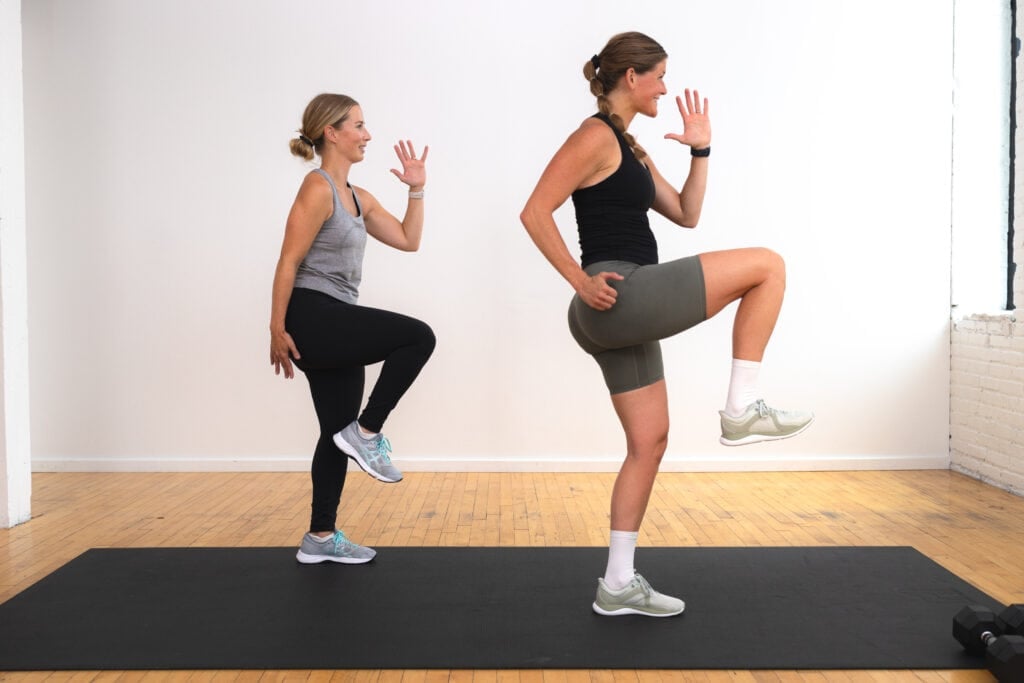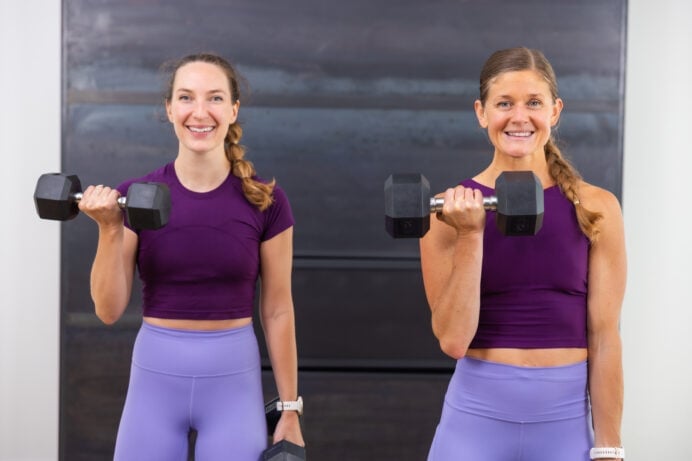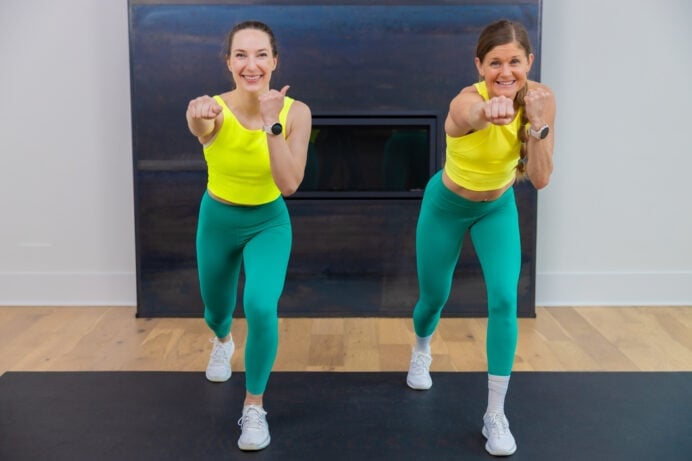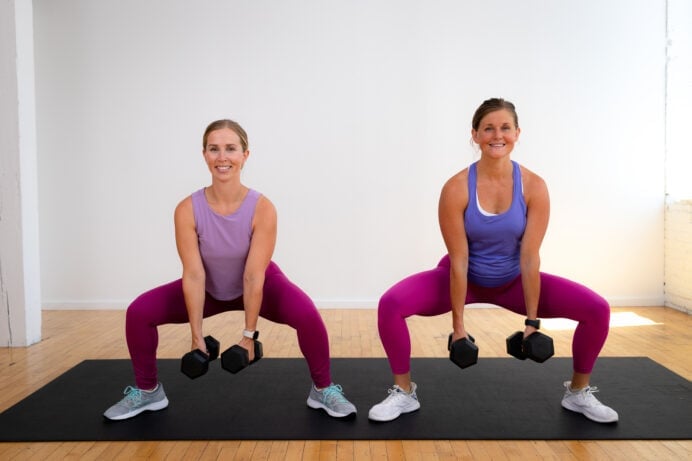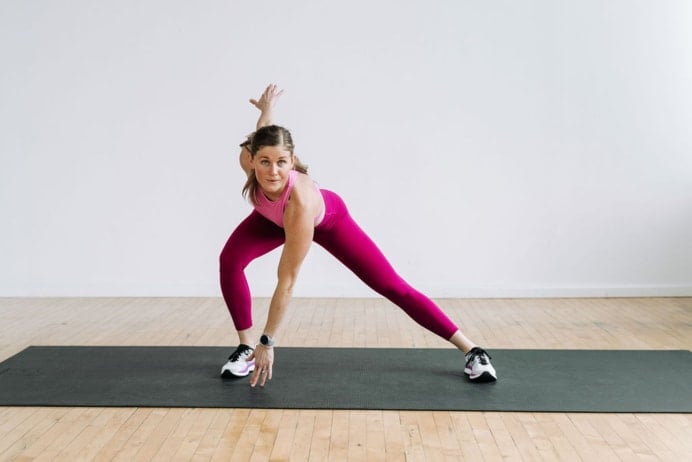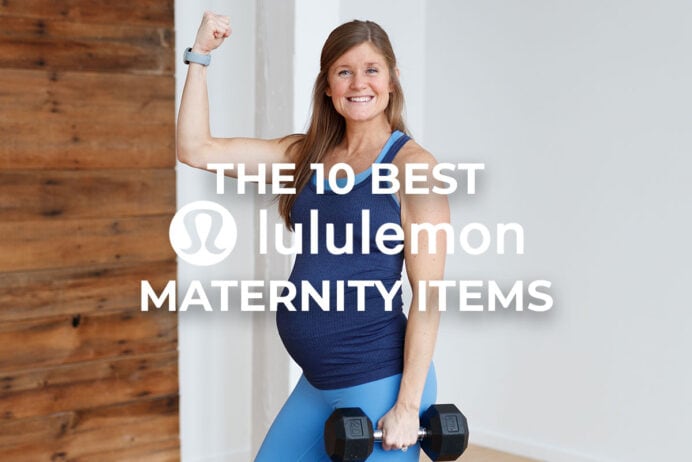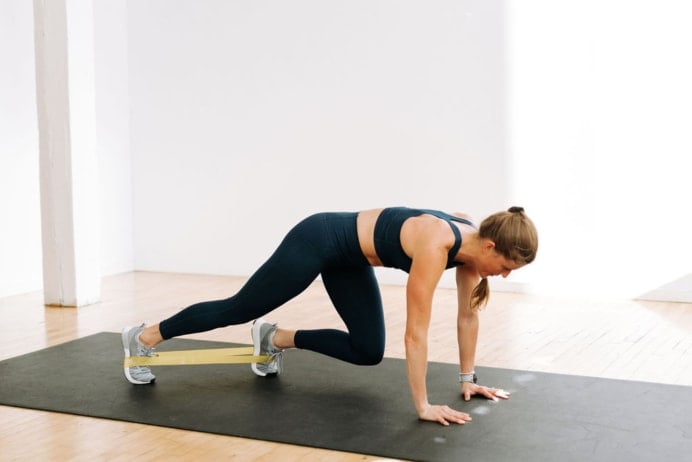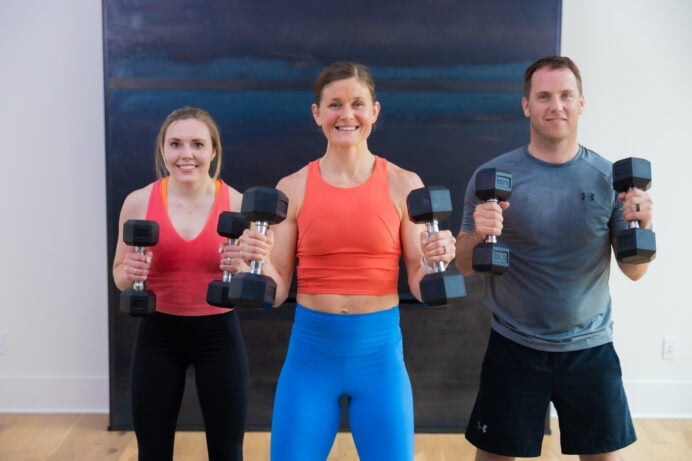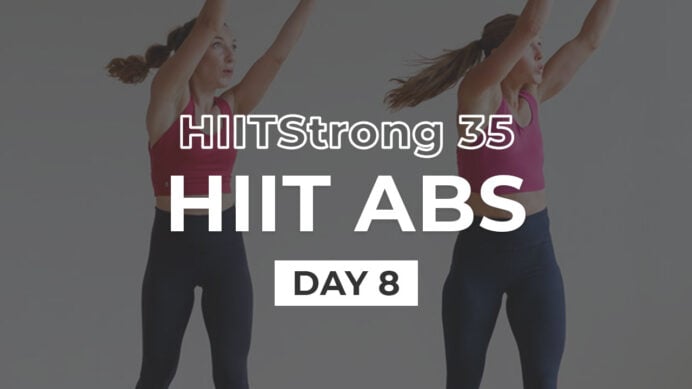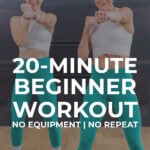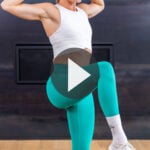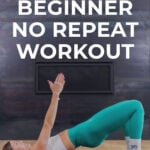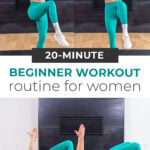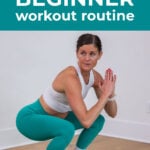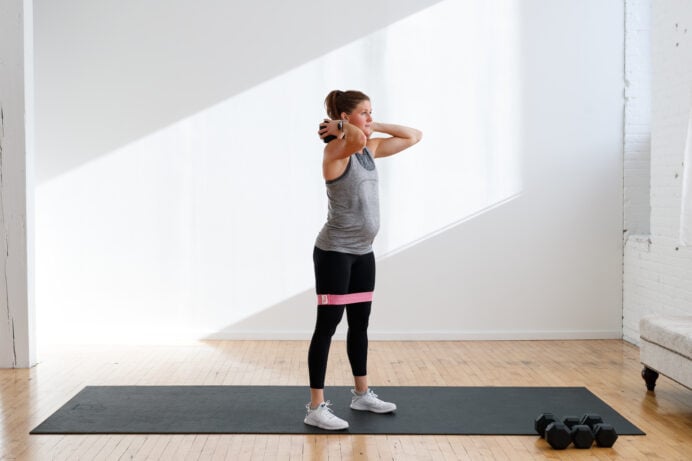
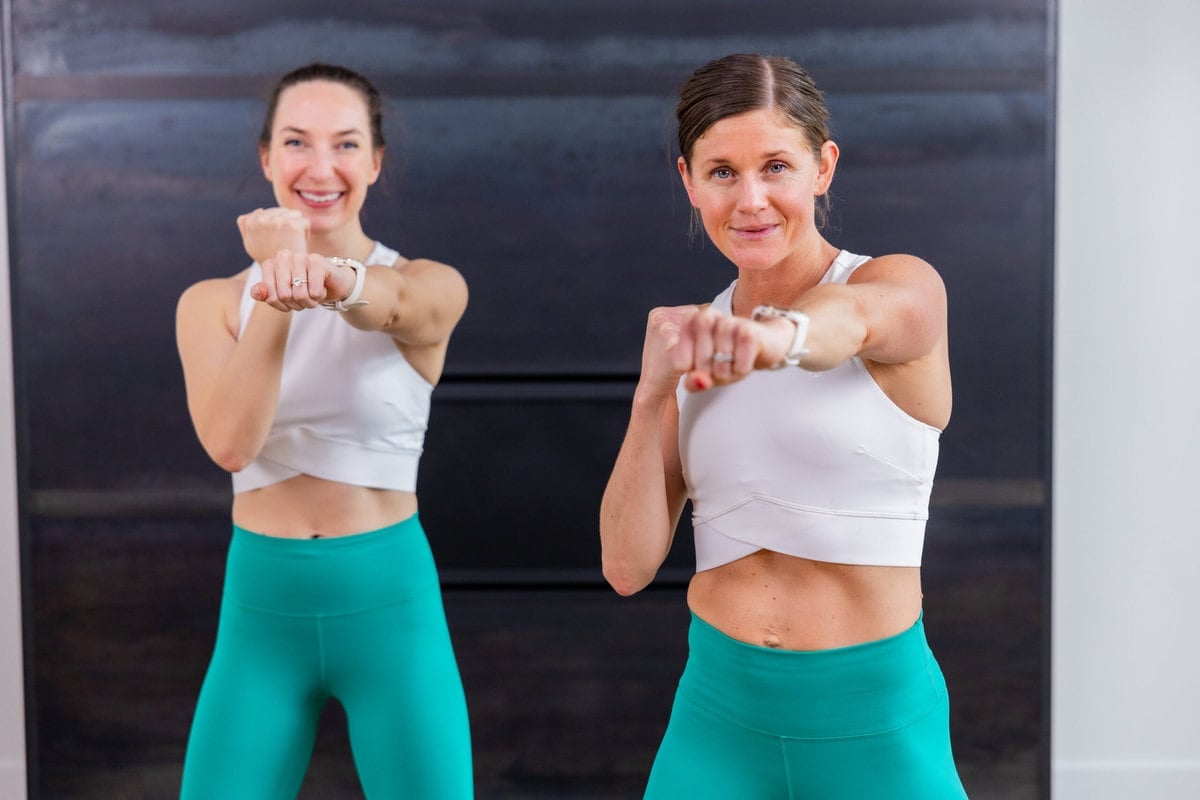
20-Minute Workout Routine for Beginners (Bodyweight, No Repeat)
Build foundational strength and endurance with this 20-minute workout routine for beginners. The best bodyweight strength training exercises for beginners starting an exercise routine. Build muscle and improve your cardio endurance with this no equipment, no repeats workout.
I know that starting a workout routine can be overwhelming, especially as a beginner.
There are a lot of options available, but I’ve always believed that the best workout routine is going to be the one you enjoy (because you’ll consistently come back to something you enjoy).
Full body bodyweight training is an effective option for beginners. Bodyweight exercises help build the mind-muscle connection, support full range of motion, and teach proper form before adding load.
Add these six beginner bodyweight exercises to your routine to build strength, increase athletic power and improve cardiovascular conditioning at home or on-the-go.
Ready to add weight training to your workout program? Try this beginner dumbbell workout or this beginner kettlebell workout.
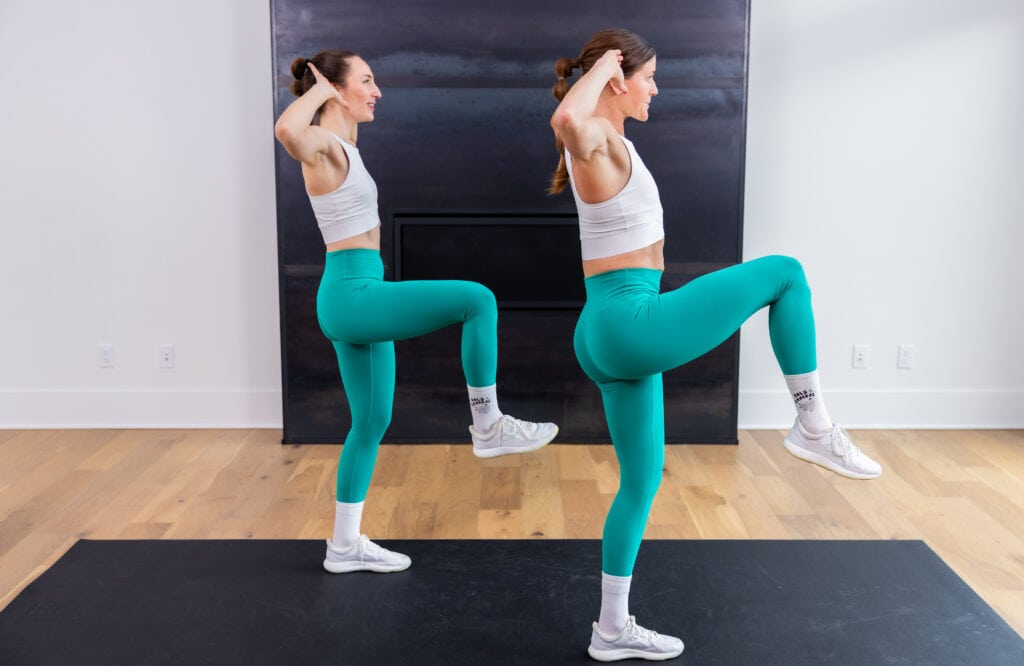
20-Minute Workout Routine for Beginners
Build total body strength, increase muscle mass and promote weight loss with this 20-minute bodyweight workout routine.
A complete bodyweight strength workout targeting every muscle group in the body: the lower body (quads, hamstrings, glutes, calves, and thighs), upper body (biceps, triceps, back, shoulders, and chest) and core.
Add full body bodyweight workouts like this one to your beginner workout plan 1-2 times per week to build and maintain strength.
Workout Instructions:
Follow along with the guided Full Body Workout Routine on YouTube, led by certified personal trainer, Lindsey Bomgren.
Your Workout Looks Like This:
- 16 Bodyweight Exercises
- Timed Intervals (perform each exercise for 45 seconds, then rest for 15 seconds. Move at your pace, performing as many reps of each move as possible within the timed interval).
- Perform Each Exercise x1 (No Repeats)
Workout Equipment:
No Equipment, Bodyweight Only.
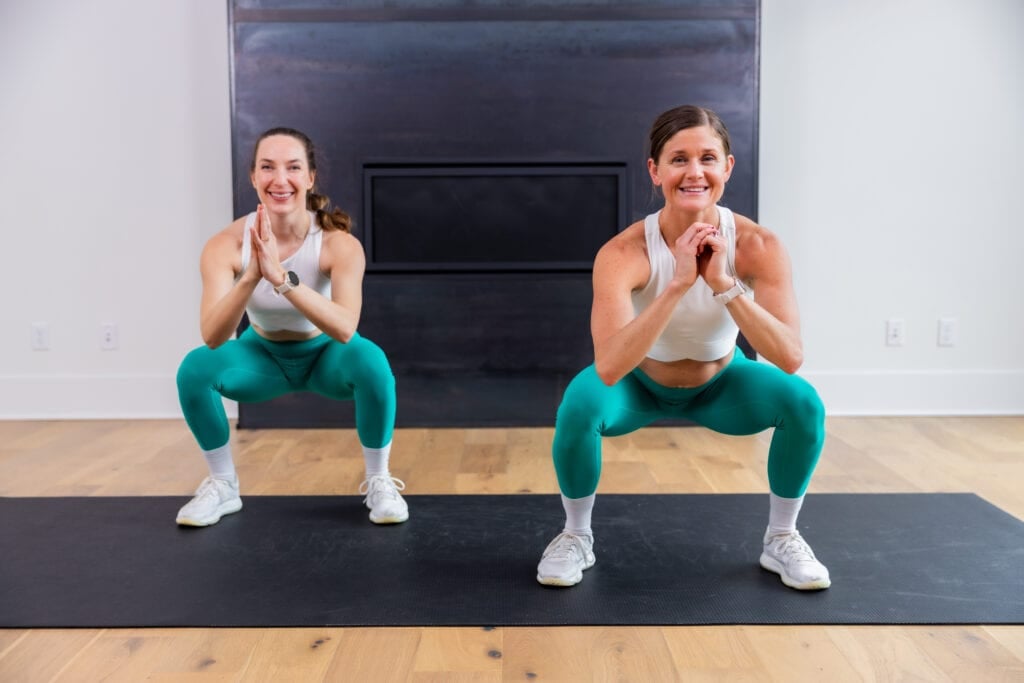
Prefer to Watch On YouTube?
Workout Outline
- Good Morning and Shoulder Press
- Bodyweight Squat
- 2-Pulse Squat and 2 Jabs
- 3-Pulse Reverse Lunge and Knee Drive (Right)
- Balance Back Fly Squeeze (Right)
- 3-Pulse Reverse Lunge and Knee Drive (Left)
- Balance Back Fly Squeeze (Left)
- 3-Count Lateral Squat
- Hook and Tap
- Lateral Squat and Cross Body Standing Crunch
- Modified Side Plank Hip Lift and Hold (Right)
- Push Ups
- Modified Side Plank Hip Lift and Hold (Left)
- Glute Bridge
- Dead Bug
- Bicycle Crunch
6 Best Beginner Exercises
Good Morning and Shoulder Press
Targets: Hamstrings, gluteus maximus, erector spinae, lower back muscles, lats, shoulders and core.
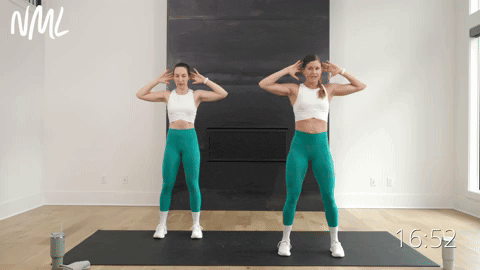
How To Do A Good Morning and Shoulder Press
- Start in a standing position, feet shoulder-width apart, core engaged. Place your hands behind your head, squeezing the shoulder blades and engaging the back.
- With a slight bend in your knees, hinge forward at the hips until your torso is parallel to the ground. Core engaged and spine neutral (back flat). You should feel a stretch in your hamstrings (back of the legs) at the bottom of the movement.
- Reverse the movement, driving through your heels to stand tall, returning to starting position (torso upright).
- Bring the arms to a goal post position (elbows bent at 90 degrees) and press the arms directly overhead, locking out biceps near ears. Squeeze the back to create resistance, activating the lats and shoulders throughout the movement.
- Bring the hands behind the head and repeat.
2-Pulse Squat and 2 Jabs
Targets: Legs, glutes, quadriceps (thighs), hamstrings, arms, back, biceps and core.
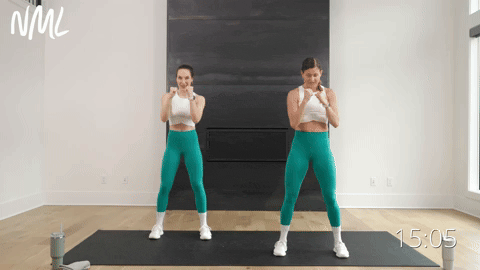
How To Do 2-Pulse Bodyweight Squats and 2 Jabs
- Start standing feet shoulder-width distance apart, knees slightly bent, core engaged. Hands are at a defensive position, guarding your face.
- Lower down into a squat position, lowering your hips down parallel with your knees. Drive your knees out toward your outer three toes.
- At the bottom of your squat, pulse by rising up an inch, then lowering down an inch and repeating for a two-count pulse.
- Drive through your heels to stand tall, squeezing your glutes.
- As you stand, perform two jabs, punching in front of your face with each hand before returning your fists to guard your face.
3-Pulse Reverse Lunge and Knee Drive
Targets: Lower body — glutes, quads, outer glutes, thighs and core.
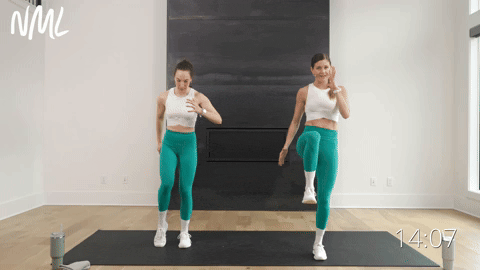
How To Do A 3-Pulse Reverse Lunge and Knee Drive
- Start in a standing position, feet hip-width apart, core engaged.
- Step your left foot behind you, lowering your back left knee towards the mat into a reverse lunge. Aim for a 90-degree bend in both knees.
- Hold at the bottom of the reverse lunge for a three-count, pulsing up an inch and down an inch.
- Drive through your front heel to stand tall. As you stand tall, perform a knee drive by driving your left knee up towards your chest.
- Hold for a moment, then step the left leg back into a reverse lunge and repeat.
Modification: Option to perform a 3-pulse runner lunge. You can omit the balance challenge by tapping the left toe to the ground rather than performing a knee drive.
Balance Back Fly
Targets: Legs, hips, core, posterior deltoids (rear shoulders), and major upper back muscles including the rhomboids and trapezius.
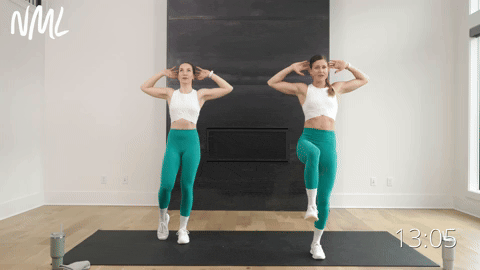
How To Do A Balance Back Fly
- Start in a standing position, feet hip-width distance apart, core engaged. Place your hands behind your head, elbows pointing straight out in front of you.
- Find a balance position by transferring your weight into your right leg as you drive the left knee up towards your chest, stopping when left knee is in line with left hip.
- Hold this balance position as you perform a bodyweight back fly, squeezing the shoulder blades and engaging the back. Think about pressing your head into your fingertips as you rotate the arms, elbows pointing straight out to the sides.
- Hold for a moment, then send the elbows back to pointing straight out in front of you. Maintain this balance hold throughout the entire timed interval.
Modification: Omit the balance challenge, resting the left toes on the ground.
Lateral Squat and Cross Body Standing Crunch
Targets: Gluteus medius, quads, inner thighs (or hip adductors), hamstrings, calves, rectus abdominis, transverse abdominal muscles, obliques, upper abs and lower abs.
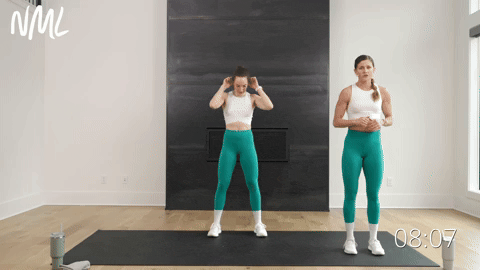
How To Do Lateral Squat Walks and Standing Crunches
- Start standing feet hip width apart, knees slightly bent.
- Leading with your left knee, step out towards the left, lowering your hips down into a squat.
- Press through your heels to stand tall, then repeat; performing another squat as you move laterally to the left.
- Then, transfer your weight into your left foot and exhale as you drive your right knee up towards your chest.
- As your knee drives up, rotate your shoulders to the right, crunching through the right side abs.
- Slowly and with control, lower your right foot to tap the ground, straightening your upper body so your shoulders now face the front of the room, returning to starting position.
- Repeat to perform a second standing cross body crunch.
- Return to starting position, then repeat on the opposite side; stepping out with your right leg and performing two lateral squat walks to the right.
- Then, bring your left knee up towards your chest, performing standing crunches on the left side.
Modified Side Plank Hip Lift and Hold
Targets: Gluteus medius (which lays on the outer edge of the buttocks and is responsible for stabilizing your pelvis), gluteus minimus (hip extension), obliques and core.
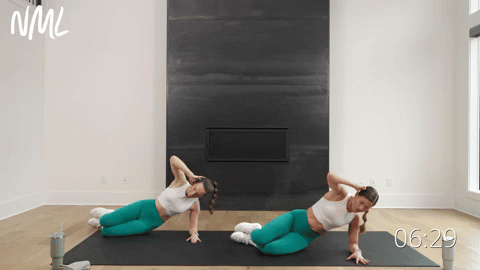
How To Do Modified Side Plank Hip Lift and Hold
- Lie on one side, with legs stacked and knees bent at a 45-degree angle, soles of the feet to touch.
- Rest on the forearm of the lower arm, shoulder stacked over elbow.
- Exhale to engage the core and stabilize your spine and pelvic floor.
- Use your outer glutes and hips to lift your resting hip off the floor. As you lift your hips off the ground, open your legs, raising your upper leg as high as you can without shifting your hips or pelvis.
- Return to the starting position and repeat to perform three side plank hip lifts.
- After the third hip lift, pause and hold at the top of the movement for a three-count. Then return to the starting position and repeat.
Modification: Keep both knees pressed together throughout the movement to create more stability.
Beginner Workout Routine FAQs
The most effective workout routine is one you’ll actually do! Start where you are, and do what you can. Full body bodyweight workouts are an accessible way to get in shape anywhere. Bodyweight training is especially effective for beginners, as it builds the mind-muscle connection, supports fuller range of motion, and teaches proper form before adding load.
True beginners should start with full body beginner workouts composed of low impact strength training exercises. As you progress, your strength training workouts can become more focused, and include beginner upper body workouts, beginner leg workouts and beginner cardio workouts.
Full body workouts that contain compound movements are excellent for building overall strength and fitness, especially for beginners. As you advance, I recommend following a split training program to truly fatigue each muscle group with more focused workouts.
More Workouts
Beginner WorkoutsPin This Workout Routine For Beginners
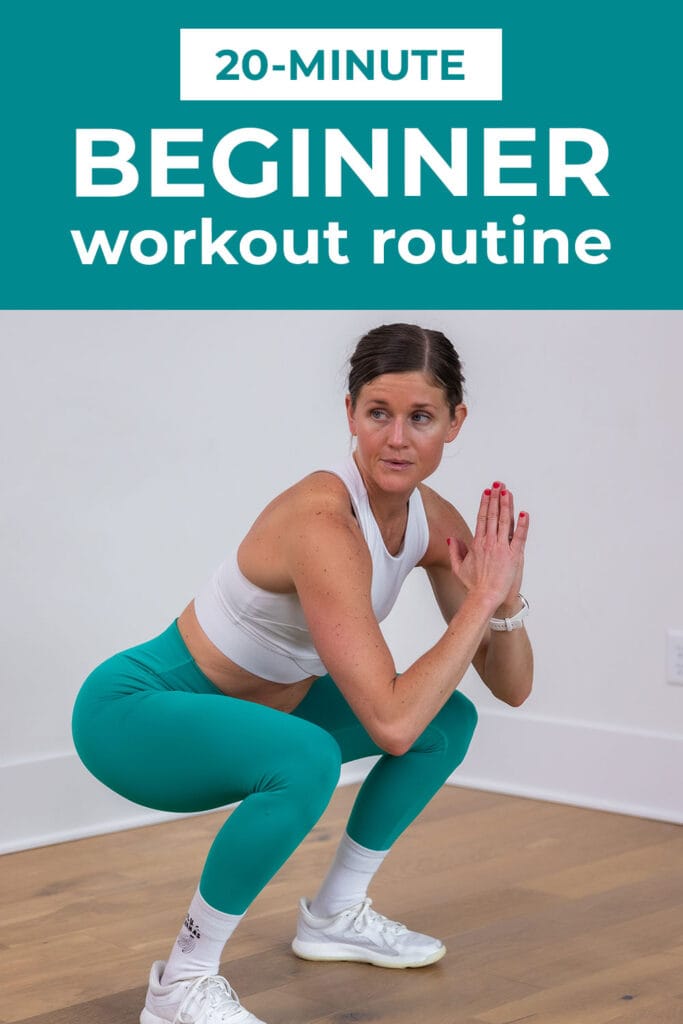
This post includes affiliate links. I do earn a commission for products purchased using these links (at no additional cost to you). Thank you for supporting Nourish Move Love, making the content you see on this blog possible.










